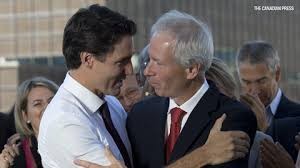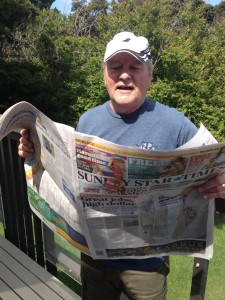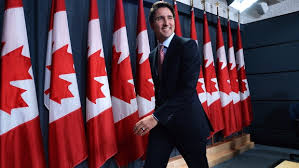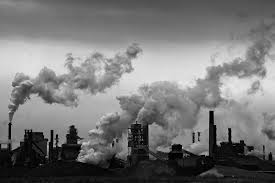November 6, 2015
BURLINGTON, ON
No matter who one voted for in the October federal election, we should all be proud of how Mr. Trudeau is conducting himself. Gracious, positive and confident, he appointed a Cabinet which everyone agrees more closely reflects the face of Canada than at any other time in our history.
Beyond diversity, the men and women who will be leading this nation come with qualifications that should help make them the decision makers the new PM wants them to be. Trudeau’s plan is to decentralize decision-making from the center, to reverse a process which had started with his father. Of course, there are dangers inherent in this democratizing of policy making – this ‘government by cabinet’ approach – since it will increase the potential for jurisdictional conflicts among ministers and could lead to somewhat inconsistent national policy.
Trudeau’s Cabinet also involves a real generational change, and as a result some ministers in key positions are relatively new to political office. Take the thirty year old Afghan refugee now responsible for democratic reform; the aboriginal former provincial prosecutor heading up the justice department; a pension expert taking over the finance ministry and a former soldier leading our national defence. But then who could argue with these men and women bringing this quality of real life experience to their offices.

Justin Trudeau and Stephane Dion – they go back some time – Dion a former leader of the Liberal party is now a Minister in anew cabinet.
And there are some political veterans, including Ralph Goodale, charged with undoing the Conservative’s oppressive security legislation, and former Liberal leader Stephane Dion, who will bring his experience to the foreign affairs ministry. Mr. Dion will have a special role this month joining the PM, the environment minister, opposition leaders and provincial premiers at the UN climate change conference in Paris.
For our relatively small population, Canada is the tenth largest emitter of greenhouse gas emissions (GHG), topping the UK, Brazil and Mexico. And we are among the highest polluters on a per capita basis. There was a time when we Canadians were once recognized as the strongest supporters of the environment and climate action.

How different will Justin be from his father? Early signs are that Justin will run a different PMO – Prime Minister’s Office
Maurice Strong, a Pierre Trudeau diplomat, chaired the 1972 Stockholm conference on human environment, and Mulroney’s environment minister, Jean Charest, made a big splash at the 1992 Rio Earth Summit. Only a few years later Mr. Chretien signed the country onto the 1997 Kyoto Protocol, a legally-binding experiment for global cooperation on climate change, which he helped craft.
I was an observer at two of the earlier UN conferences and observed the measure of respect accorded delegates from this nation. Even after GW Bush ended US participation in Kyoto, the Liberal government insisted on ratifying the agreement helping to bring it into force internationally. Some said we were destined to fail since the US, our biggest trading partner, was sitting on the sidelines.
And the election of the Harper government in 2006 made that a self-fulfilling prophesy. Emission reduction initiatives, begun by the Liberals, were either killed or curtailed as Mr. Harper demonstrated his disdain for Kyoto and anything to do with climate change.
Mr. Harper was never happy with the 6% (below 1990) Kyoto target and eventually chose his own – 17% below 2005 emission levels. The irreverence and arrogance of unilaterally changing one’s target and baseline, while being a party to the legally-binding Kyoto Protocol, was lost on no one. And nobody was surprised when Canada became the first and only nation to drop out of the Kyoto Protocol (2012).
There is inherent conflict between seeking emission reductions and expanding the world’s most polluting oil production process. So by 2015, with the Paris conference and a federal election on the horizon, and with no hope of meeting even his more modest emission goal, the former PM changed the target again. By choosing 30% by 2030, he effectively insulated himself from accountability – unless he were re-elected PM another five times.
Fortunately over the last decade a number of GHG reduction initiatives were undertaken by several provinces. Ontario was the most successful, with its phase out of coal-fired electricity. But Quebec and B.C. also moved forward with a number of measures including a carbon tax. In fact, were it not for the oil-sands projects, Canada might have come close to meeting the original 6% Kyoto target, even in the absence of federal involvement and support.
Neither Harper, nor Chretien for that matter, consulted the provinces before grabbing a number out of the air to use as a target. Alberta, was so annoyed at the Chretien government, the province threatened a constitutional challenge over Kyoto. And four provinces, tired of waiting for the federal government to act, joined a California based emissions trading experiment – including an even different target.
During the election campaign, Mr. Trudeau had been criticized by his opponents for not choosing his own GHG emissions target. What he has done is invite the premiers to join him in Paris, to participate in the deliberations and to carve a new place for Canada at the table of serious nations.
After all Canada is a federation. And leadership in a federation means bringing all the jurisdictions to the table, something his father couldn’t always do and which Mr. Harper rarely, if ever, tried.
The new PM’s biggest challenge will come in Paris – a test case for co-operative federalism. Fortunately for him most of our provincial leaders, including Alberta, are more than willing to move forward on this file.
And, if they are successful, eventually the PM and his provincial partners will have developed realistic GHG emission reduction targets which we can actually achieve in our lifetimes. Then, hopefully, they can build on that momentum and move onto other issues of import to our federation.
 Ray Rivers writes weekly on both federal and provincial politics, applying his more than 25 years as a federal bureaucrat to his thinking. Rivers was a candidate for provincial office in Burlington where he ran as a Liberal against Cam Jackson in 1995, the year Mike Harris and the Common Sense Revolution swept the province. Rivers is no longer active with any political party.
Ray Rivers writes weekly on both federal and provincial politics, applying his more than 25 years as a federal bureaucrat to his thinking. Rivers was a candidate for provincial office in Burlington where he ran as a Liberal against Cam Jackson in 1995, the year Mike Harris and the Common Sense Revolution swept the province. Rivers is no longer active with any political party.
Background links:
Trudeau Cabinet Government by Cabinet
Paris Cutting Programs that Cut Emissions Kyoto More Kyoto
Even More Kyoto 2020 Targets 1972 Copenhagen
1992 Rio EU 2015 Targets Current Emissions Dion






















Prime Minister Justin Trudeau’s decision to take an entourage of Canadian political leaders including Elizabeth May to the United Nations climate conference (COP21) starting Nov. 30. was wise, gracious and a positive sign, Trudeau will take environmental issues seriously.
Trudeau’s cabinet composition appears to fairly represent Canadians.
Some appointments including Justice Minister Jody Wilson-Raybould and Defence Minister Harjit Singh Sajja are clearly historically significant.
While I’m optimistic about direction change, its still far too soon to cast judgement. These people must be given a chance to prove themselves.
There is nothing quite as dazzling as the honeymoon period in politics. I even remember a friend of mine (Canadian) buying an Obama t-shirt. He donated that one to Goodwill a few years ago. Governing is very different from campaigning and promising.
Like Obama, Trudeau also advertised a feast of adventurous promises to transition from a grossly incompetent preceding administration. The UN climate change conference will be our first view of how he is perceived on the international stage. We all hope that results in the return of respect for Canada as a responsible government. If cute and fuzzy cabinet ministers are the price we have to pay so that the platform gets completed, then it’s worth it.
I would have preferred that he pick the best people for the job, period, and not base his selections on the colour of their skin, ethnic background, or gender. This isn’t a United Colours of Benetton commercial. Day one on the job and he’s already weakened our Country by allowing emotion and political correctness to alter his decision making process. Not good.